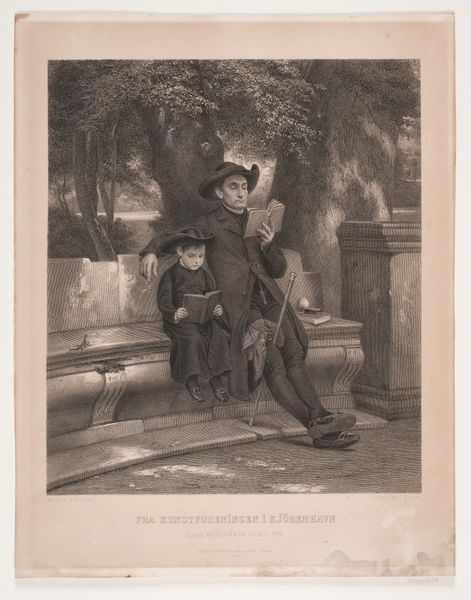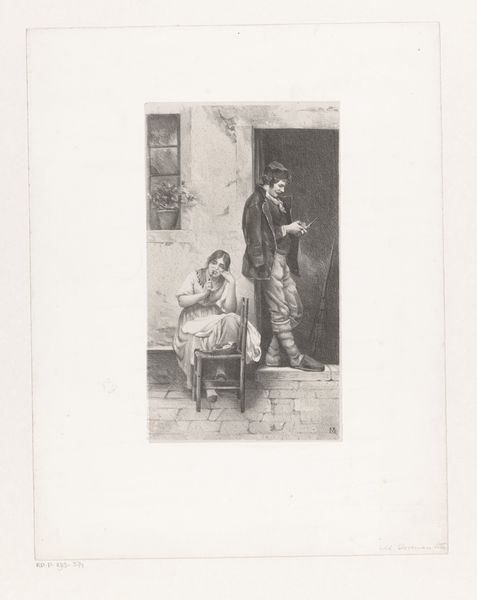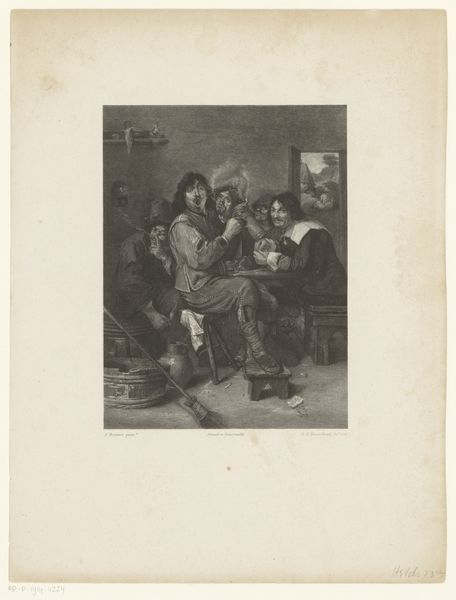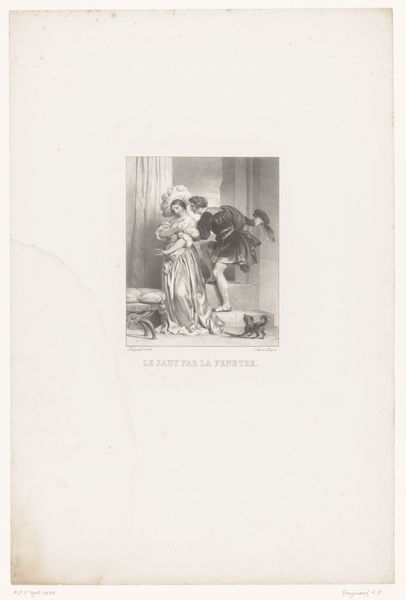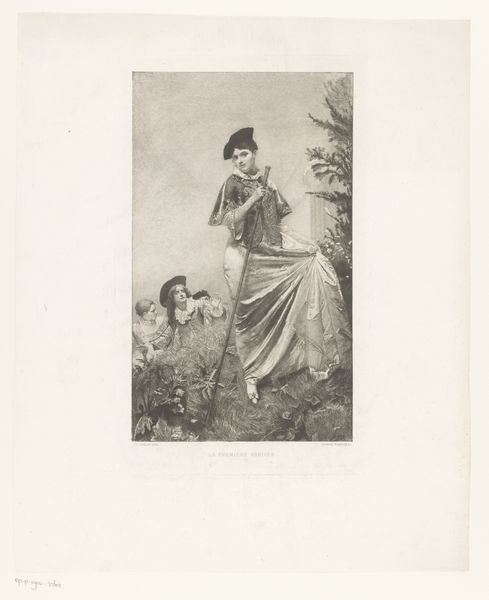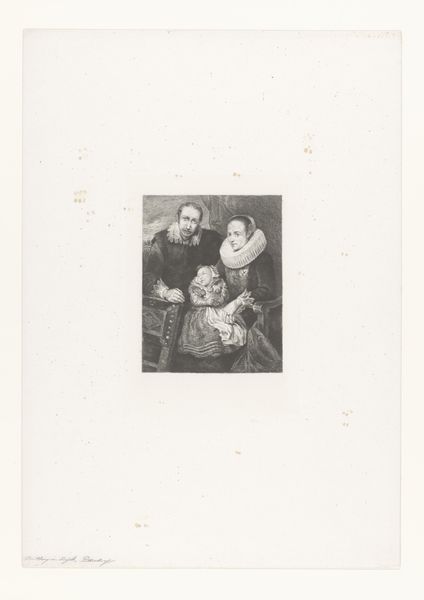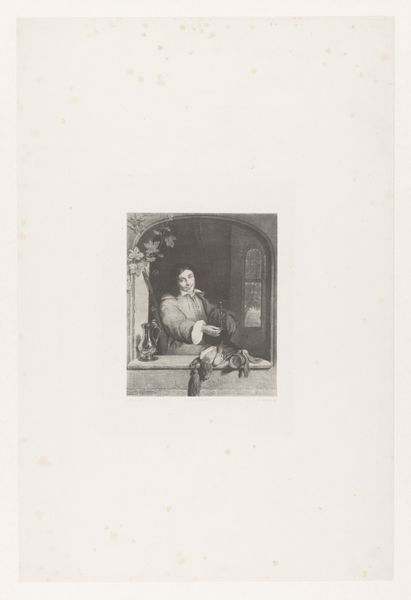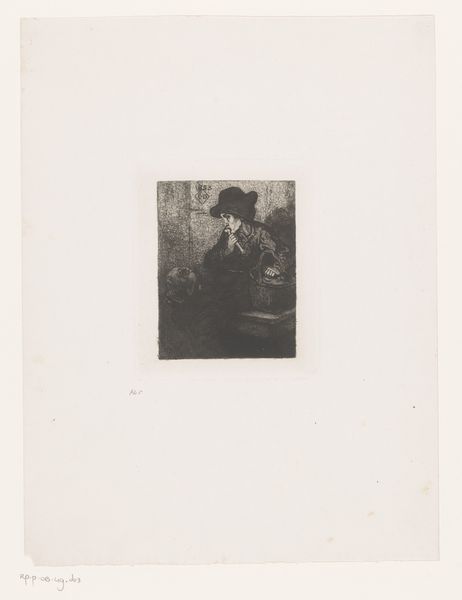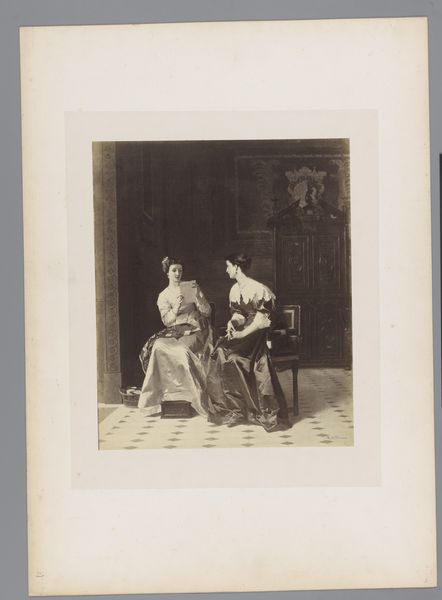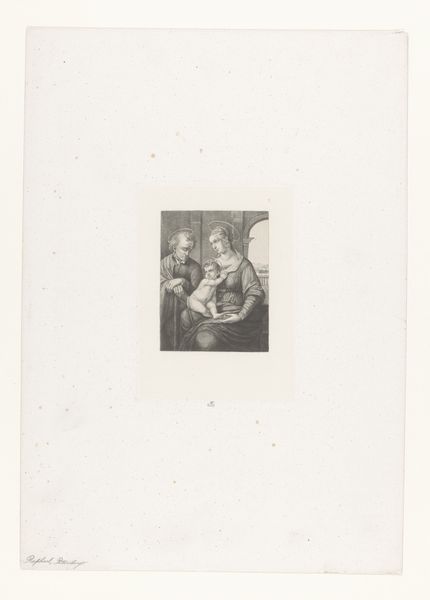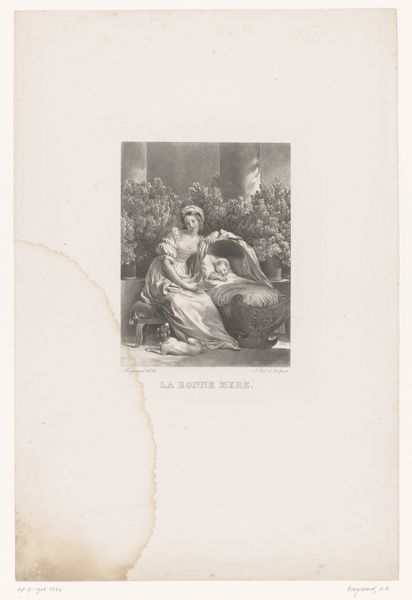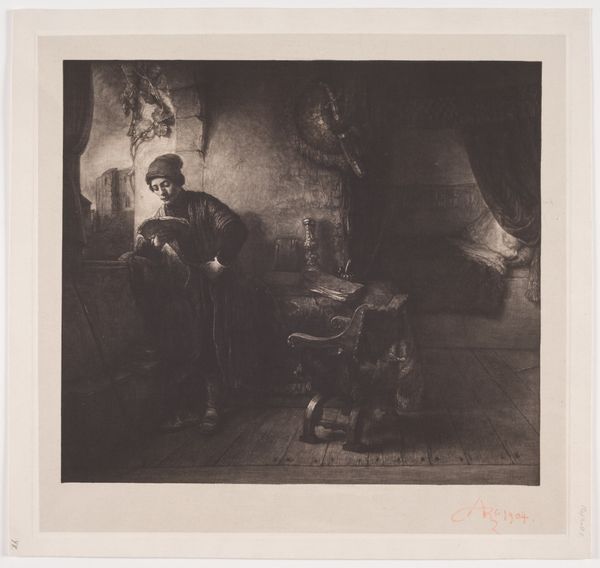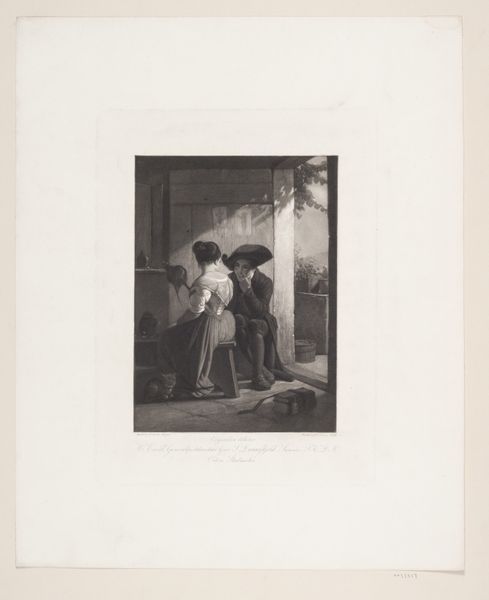
print, engraving
#
portrait
# print
#
landscape
#
genre-painting
#
academic-art
#
engraving
Dimensions: 457 mm (height) x 620 mm (width) (plademaal)
Curator: I am struck by the contrasting light and shadow, almost theatrical. A cleric, seated beside his young pupil under the foliage, is deeply engrossed in a book. The composition holds my attention, yet there is something melancholy in it, would you not agree? Editor: Let’s delve into what shapes the work, technically. This engraving, made between 1883 and 1885, titled "Italiensk praest med sin elev" – “Italian Priest with his Pupil,” is a work by Joel Ballin, held in the Statens Museum for Kunst. The linear precision achieved through engraving gives the image its distinctive character. What’s interesting here is how such a technique renders this sombre mood. Curator: It is a narrative rooted in its time, perhaps? Look closer; notice how their clothing marks a socio-economic difference between student and cleric in what may seem like simple, everyday instruction. One also cannot ignore this beautiful landscape, it has an air of Academic art that blends portraiture with a certain type of genre painting. Editor: Absolutely, and it's worthwhile considering the social implications and context surrounding this print. What narratives did the artist seek to create by documenting interactions and relationships within this particular socio-economic setting? Was he making comment on those dynamics through the means of art making itself, its consumption, or purpose? Curator: That's intriguing. The contrast is definitely heightened by the tonal range the medium offers, isn’t it? Perhaps, one reading of that dark and light can reflect how tradition encounters changing society norms – and I'm not so certain that Ballin gives one of them precedent. It would have been nice if color added dimensions to all this too. Editor: Precisely. Each of these deliberate aesthetic choices and formal arrangements serves to underscore the core relationship depicted. And further study into the function of portraiture – for a certain set – versus that of more typical academic forms also becomes more fascinating now given how it was executed with precision during its moment as commodity and product itself. Curator: I see your perspective. What at first seemed like simple figures in composition turns to a dialogue on labor, art-making and how that all reflected an important part of history! Editor: Indeed; looking at a historical object's artmaking gives insights into social dynamics!
Comments
No comments
Be the first to comment and join the conversation on the ultimate creative platform.
